Most of us recognize the iconic architecture of Petra with its buildings carved into stone rock walls. Remember Indiana Jones and the Last Crusade? (Many other films were shot here including Aladdin, The Mummy Returns, Queen of the Desert, to name a few.)
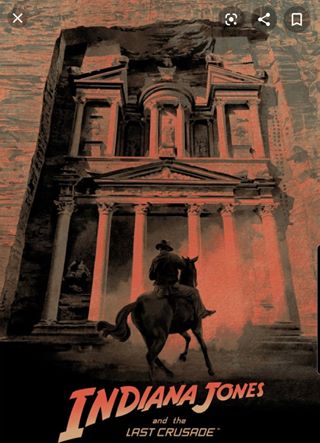
Aside from that, how much do we actually know about this ancient city? Or the country of Jordan? For us, the answer was not enough. And since we would be (relatively) close by for our Egypt/Morocco trip, we made a whirlwind 4-day trip to learn and see as much as we could in that short time.
Map of our destinations around Jordan
Jordan Facts
Jordan is about the same size as Ohio with about 15% less population: Jordan has 10 million people; Ohio 11.5 million. Over 3 million of the population are non-Jordanians: over a million Egyptians working in the fields, 1/2 million refugees from Iraq and Syria each among them.
Our tour got off to a great start when we met our guide Akram Halabi. We booked our tour through kimkim, and specifically requested Akram due to the numerous glowing reviews about him. Turns out, he’s the manager of the guides, and normally doesn’t guide himself anymore, but had made an exception since we specifically requested him. We hope he’s as happy as we are that he did … we couldn’t have found a more professional, friendly, accommodating and open guide, whose passion for his country was contagious. We were so fortunate to benefit from his knowledge, advice, insights and graciousness. We’re chagrined that we didn’t get a good picture with Akram; we may need to return to Jordan just to rectify this oversight!
According to Akram, Jordan is the ‘Switzerland’ of the Middle East, having stayed relatively neutral in a neighborhood known for conflict. He is very proud of his capital city of Amman (nearly 3 million people in the greater Amman area), deeming it much more European and modern than Cairo for instance. Having now been to Cairo, we have to agree, at least given the parts of Cairo we saw. Jordan is a parliamentary monarchy, with the king as head of state, a prime minister and 2 houses of parliament: upper and lower.
Jordan’s economic resource base centers on mining, minerals and manufacturing, and tourism. Lacking coal reserves, hydroelectric power, large tracts of forest or commercially viable oil deposits, Jordan relies on natural gas for 93% of its domestic energy needs. Jordan used to depend on Iraq for oil until the American-led 2003 invasion of Iraq, which led to some anti-American sentiment, but we certainly did not experience that on our trip; everyone was extremely welcoming.
Queen Noor: Dallas Connection
As an aside, the other thing you may know about Jordan is that King Hussein of Jordan married an American, Lisa Halaby – Queen Noor – in 1978. What you might not know is that Queen Noor’s father, an American named Najeeb Halaby, was born in Dallas, where his father – a Syrian Christian immigrant – had opened a Halaby Galleries, a rug boutique and interior-decorating shop, at Neiman Marcus in Dallas.

First Stop: Jerash
Thanks to Akram’s expert advice, we avoided Amman’s gnarly traffic, and instead traveled back in time (if only briefly) with a trip to Jerash, one of the best preserved Roman ruins outside of Italy. ‘Ruins’ is a bit deceiving: it may not look the way it did 2,000 years ago, but Jerash is one of the best-preserved Roman cities in the world.
The city was originally founded by the Greeks under Alexander the Great in the 4th century BC, but was fully developed by the Romans starting about 300 years later. Jerash was hugely enriched as a trading center for the Romans, with goods coming to/from Europe to the northwest. (Petra, which we visited later, operated as the trading center for goods coming to/from the Roman Empire in Arabia, Asia and Africa).
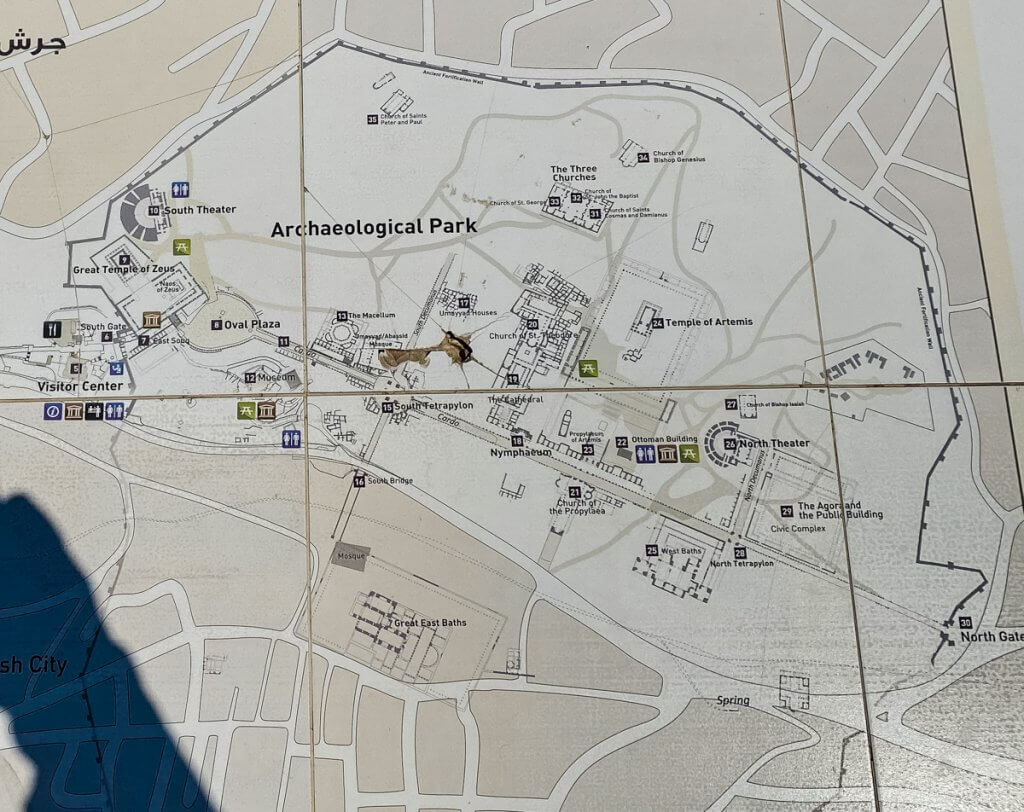
Jerash (about 30 km north of Amman) is the site of one of the largest group of Roman ruins outside of Rome. 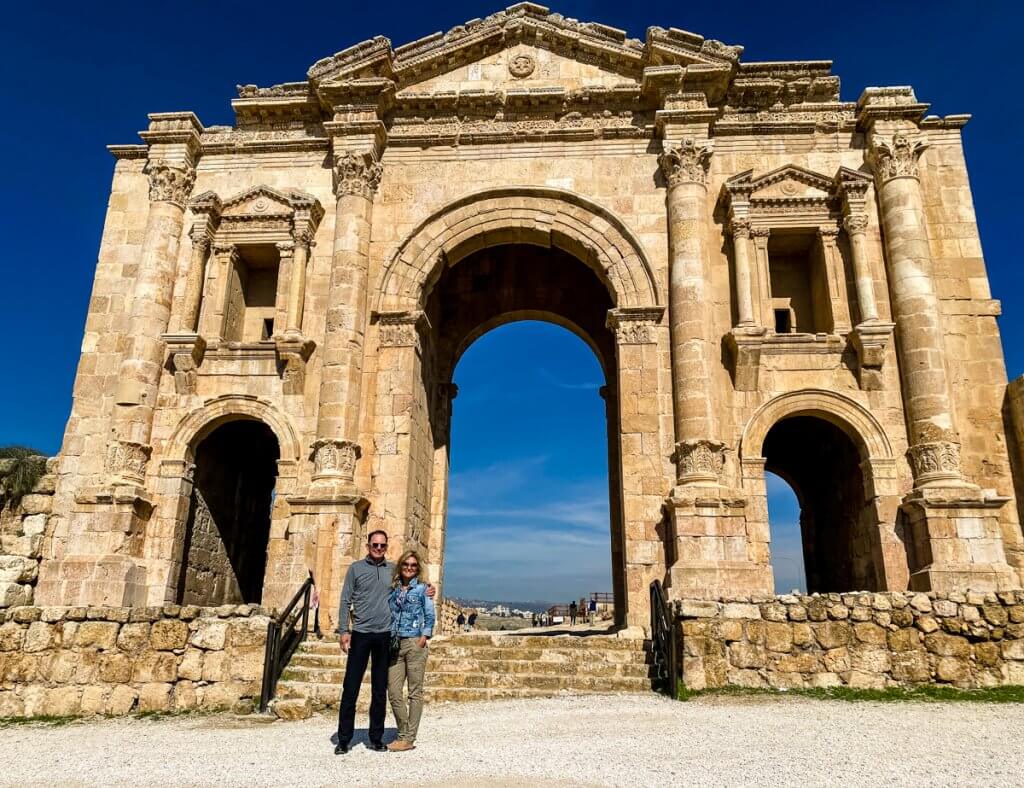
Arch of Hadrian, gate to the old Roman city. Erected in 129AD to honor the visit of Roman Emperor Hadrian to the city that was then called Gerasa. 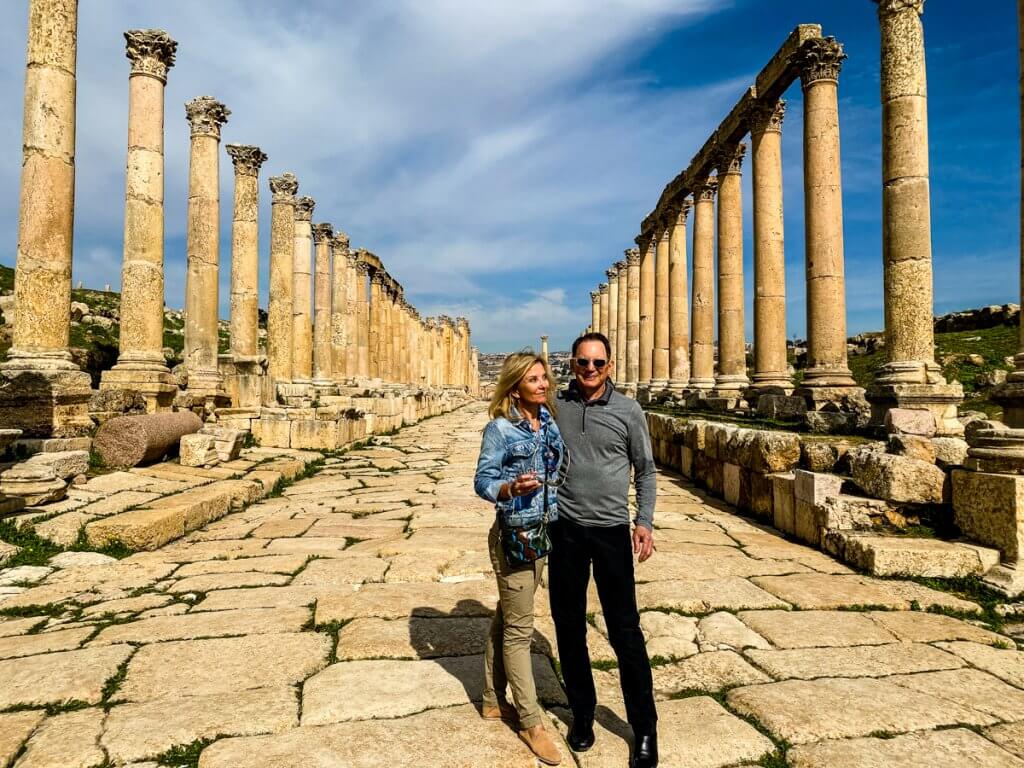
The Cardo, one of the two main streets, that is 80 meters long and lined by columns. 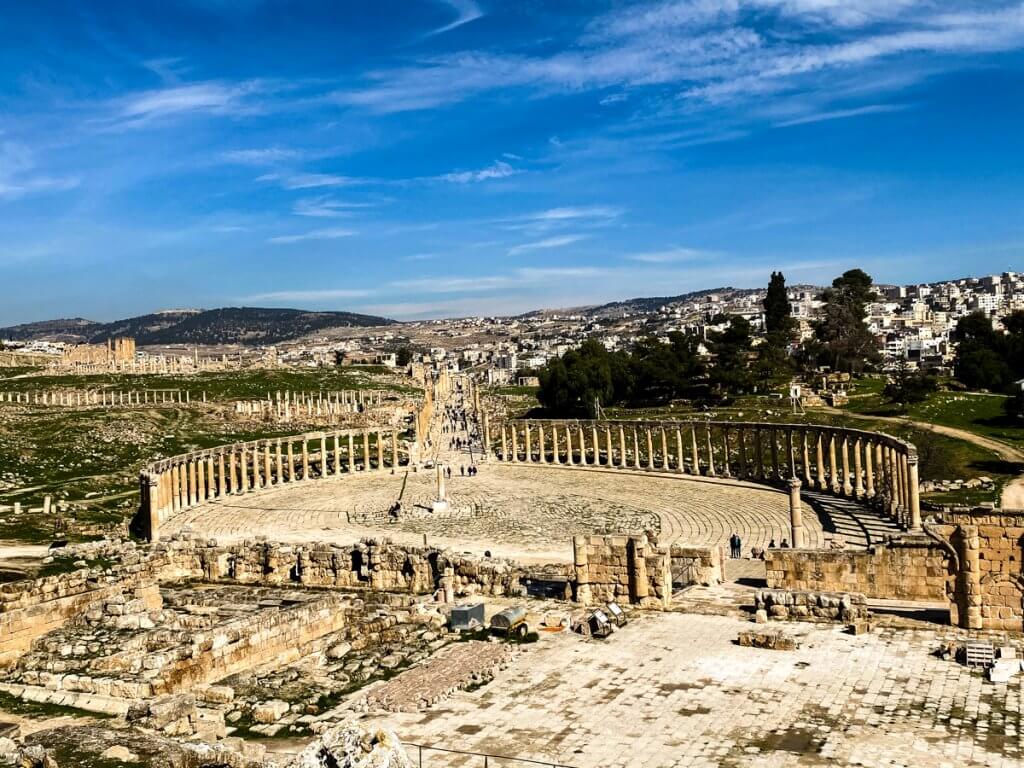
Unique in its oval shape, the impressive Oval Plaza, 90 meters by 80 meters, dominates one side of the city with its stately colonnades. 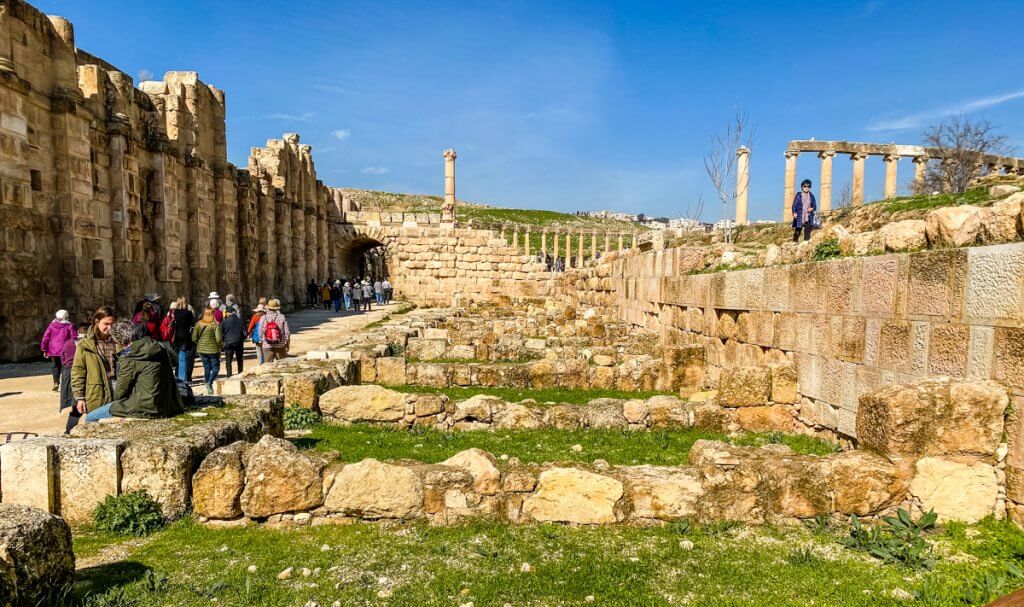
A row of retail shops. 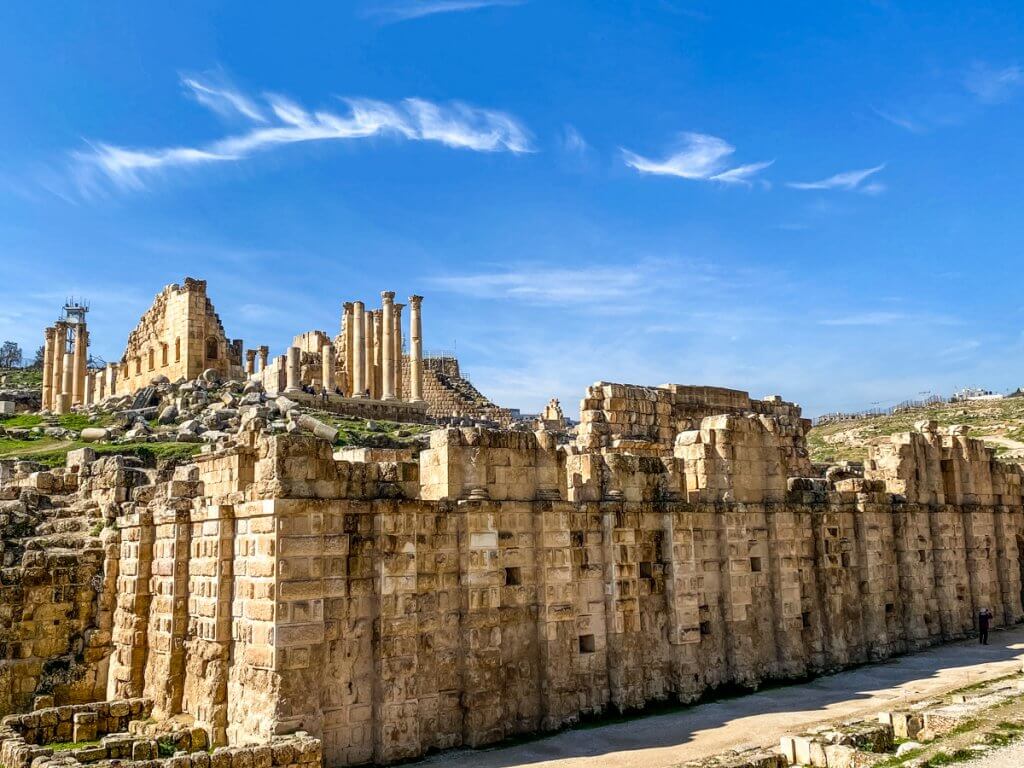
The Temple of Artemis in the background. 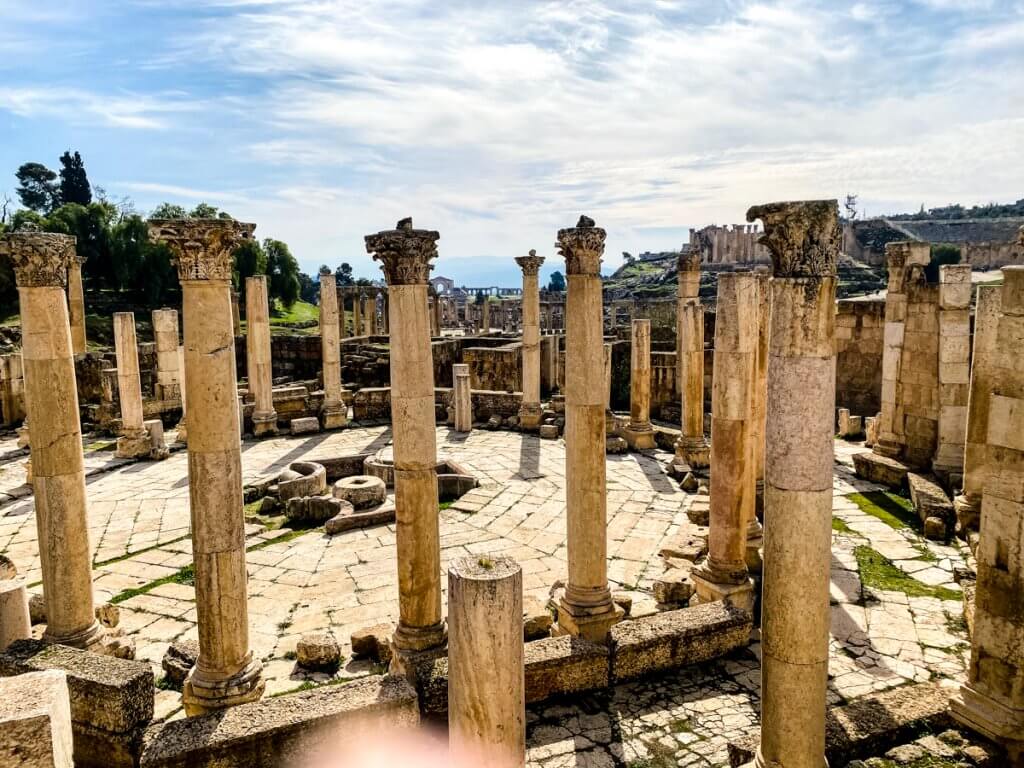
Central fountain. 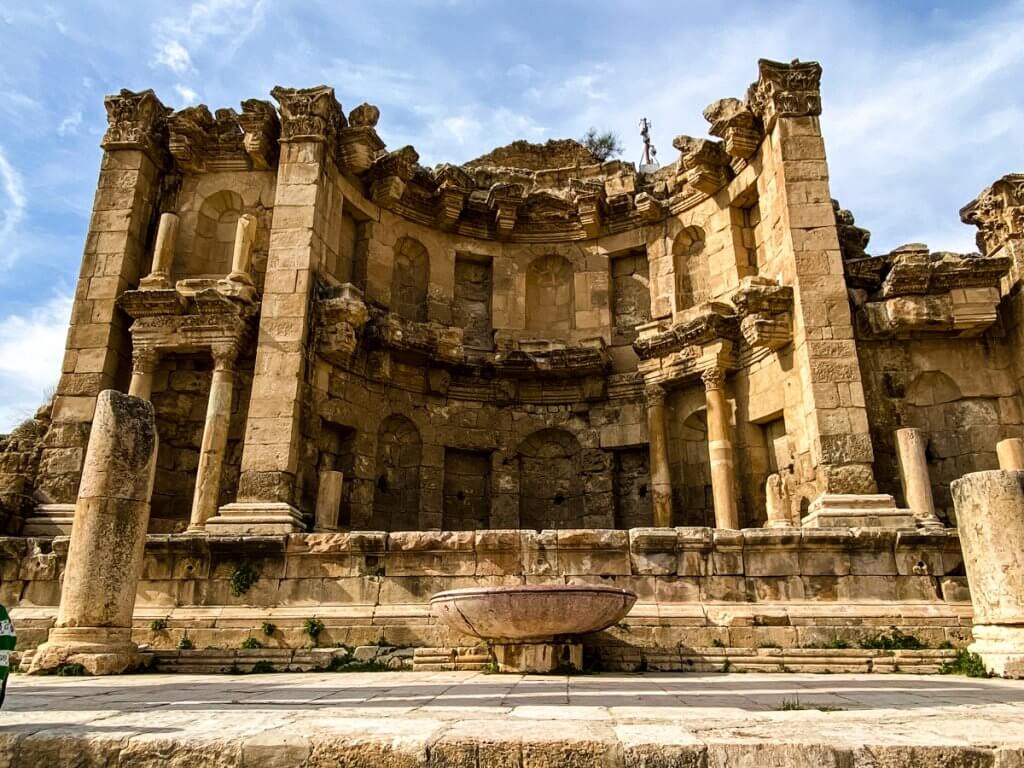
The Nymphaeum, a two story fountain. 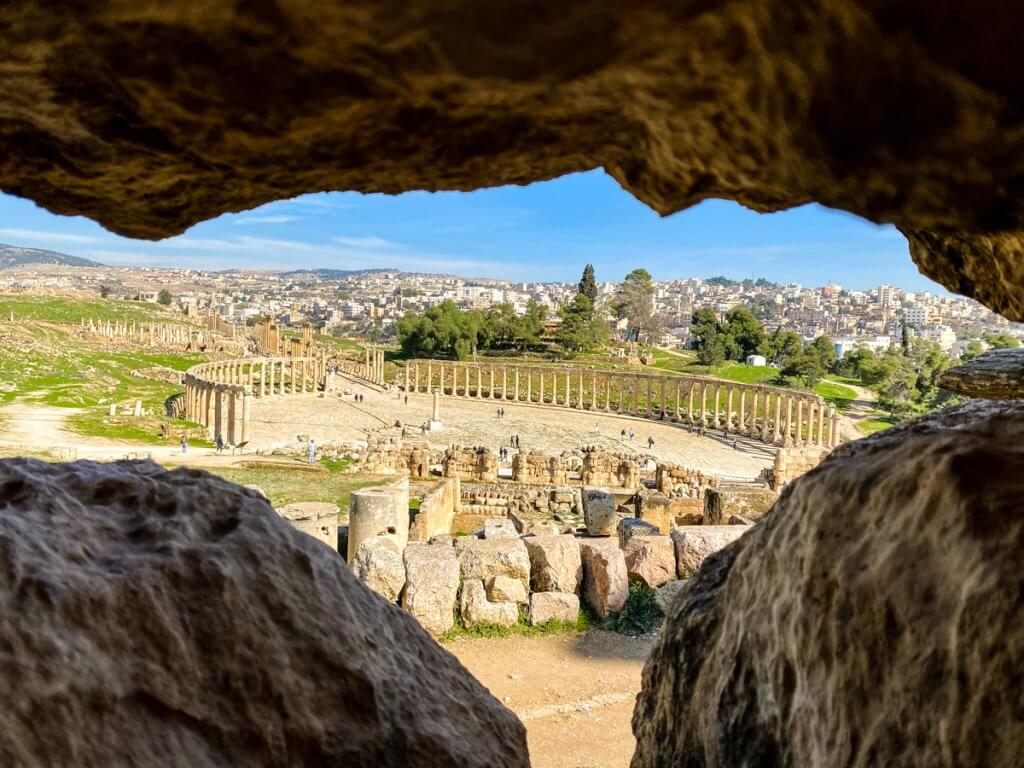
The Oval Plaza from a peek-a-boo view.
Let’s See The Dead Sea
Continuing onward to the Dead Sea, we stayed the night at the gorgeous and luscious Kempinski Ishtar. The Dead Sea is not the saltiest body of water on earth, nor is it the largest salt water lake, but its shores and surface, at 430 meters (1,412 feet) below sea level, are Earth’s lowest elevation on land.
Located at an altitude of 1,412 ft below sea level, the shores of the Dead Sea are the lowest point on Earth. The water is 34% salt — almost 10 times saltier than the ocean — and one of the world’s saltiest bodies of water. It is this hypersalinity that causes people float, which has attracted visitors for thousands of years.
The Dead Sea was one of the world’s first health resorts back in the first century B.C.
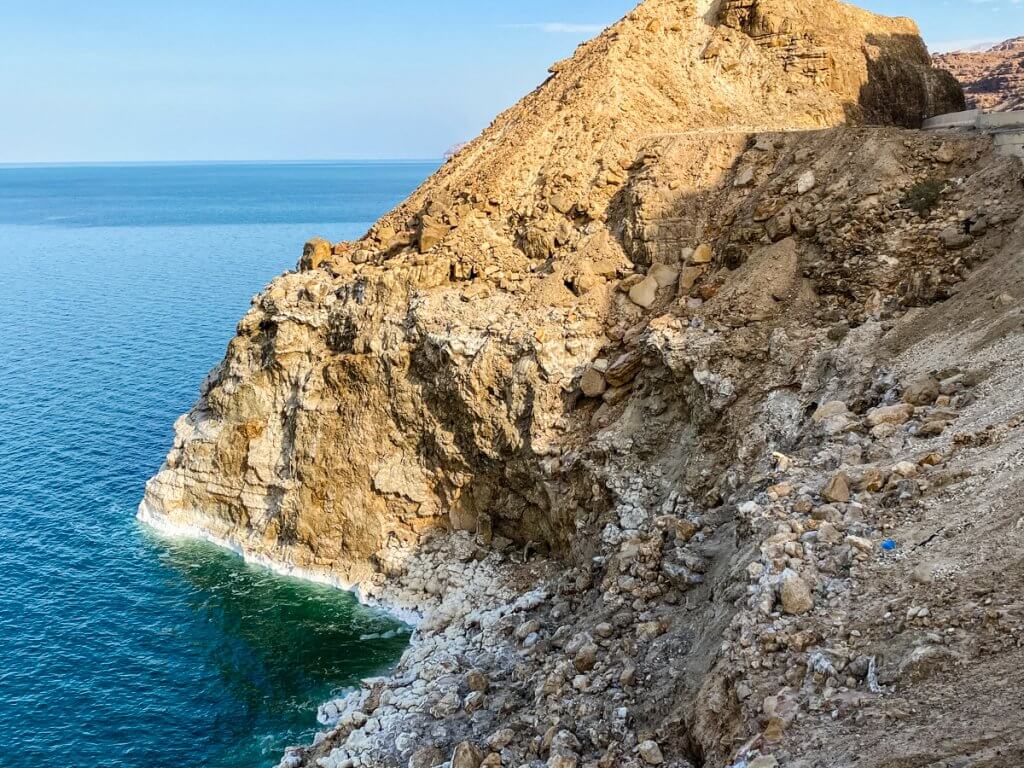
The 75′ drop in the Dead Sea during the last 30 years is clearly visible as the salt residue has been left on the overlooking cliffs. This drop has been caused by utilizing the Jordan River and its tributaries for irrigation. 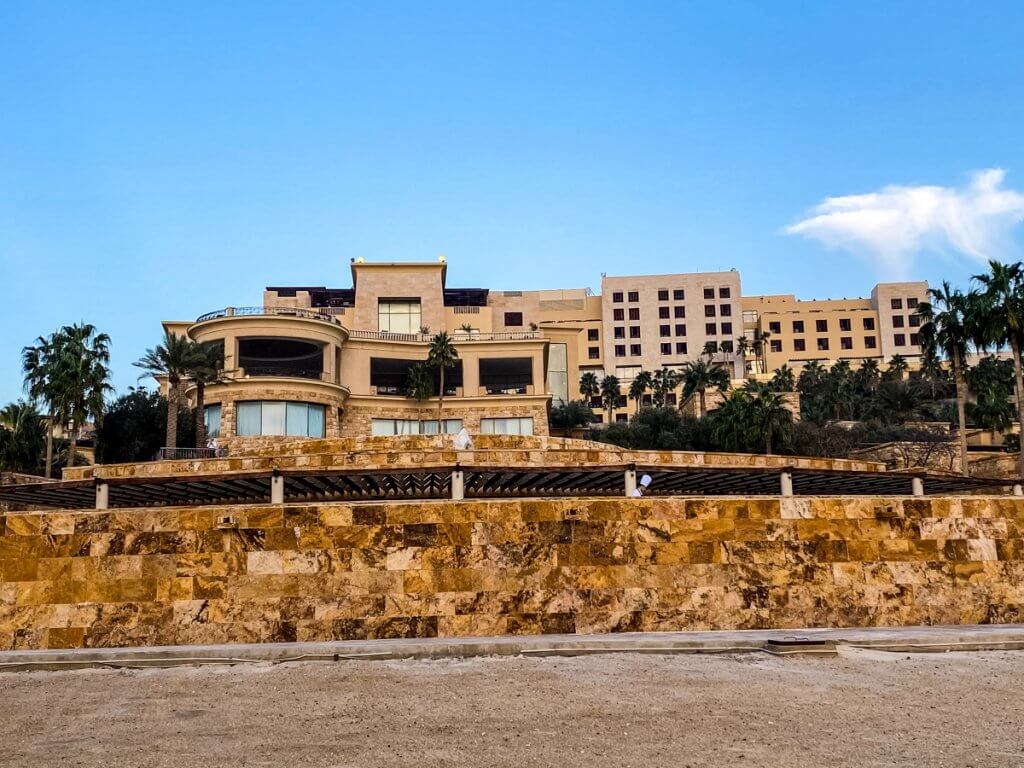
The Kempinski on the Dead Sea. 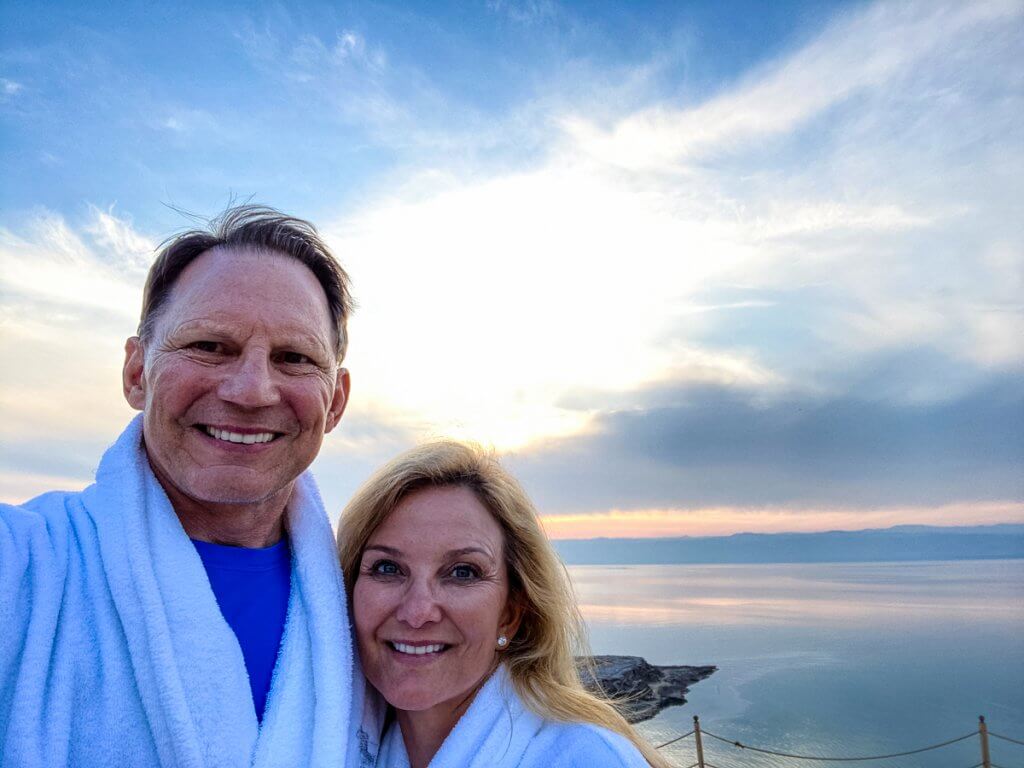
The air was a little chilly, so we were a bit reluctant to get wet. 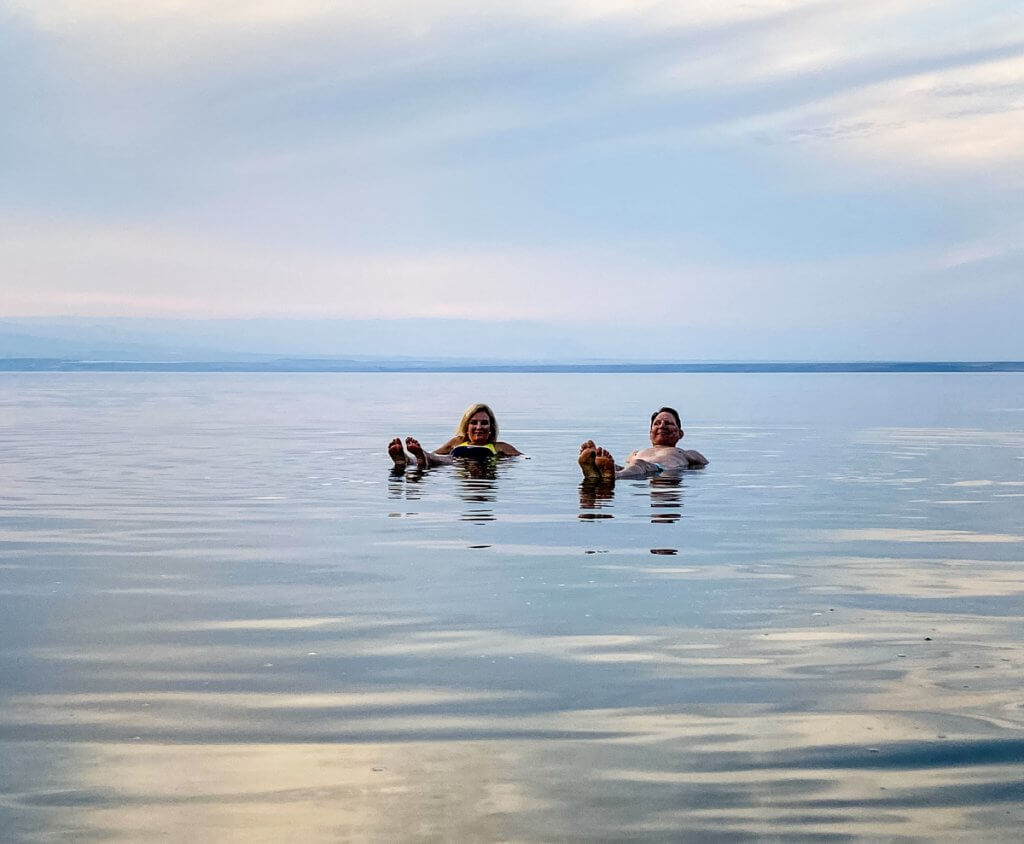
But we found the water to be about 78 degrees F. Much warmer than the air. 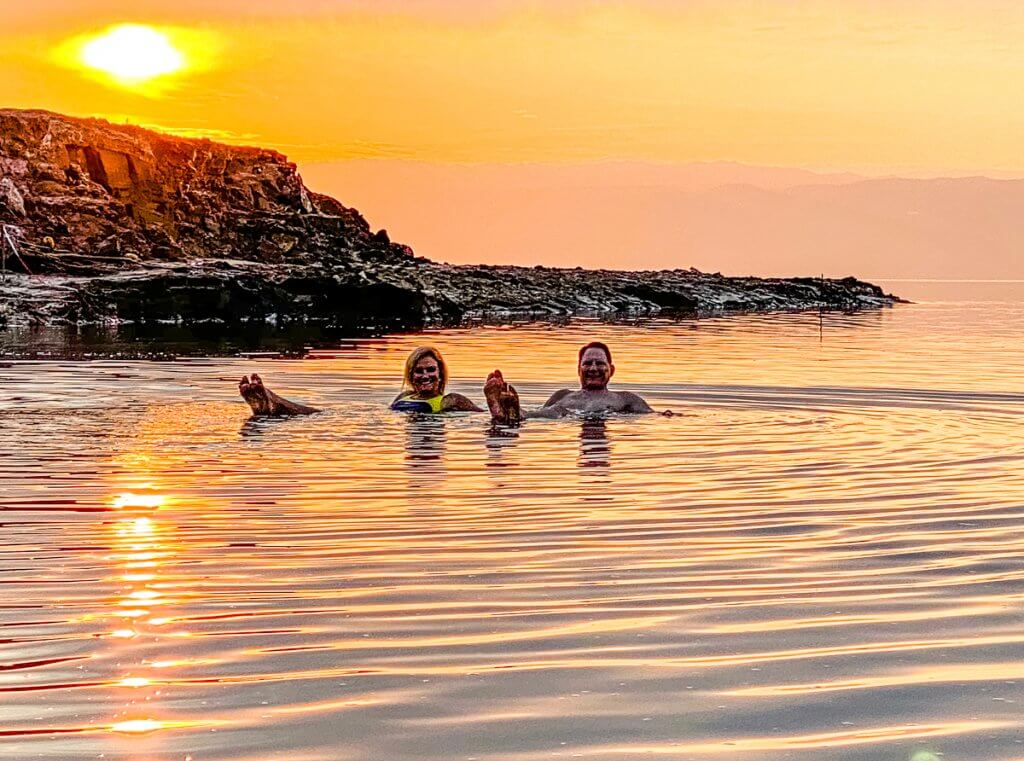
We were in the water as the sun began to set. 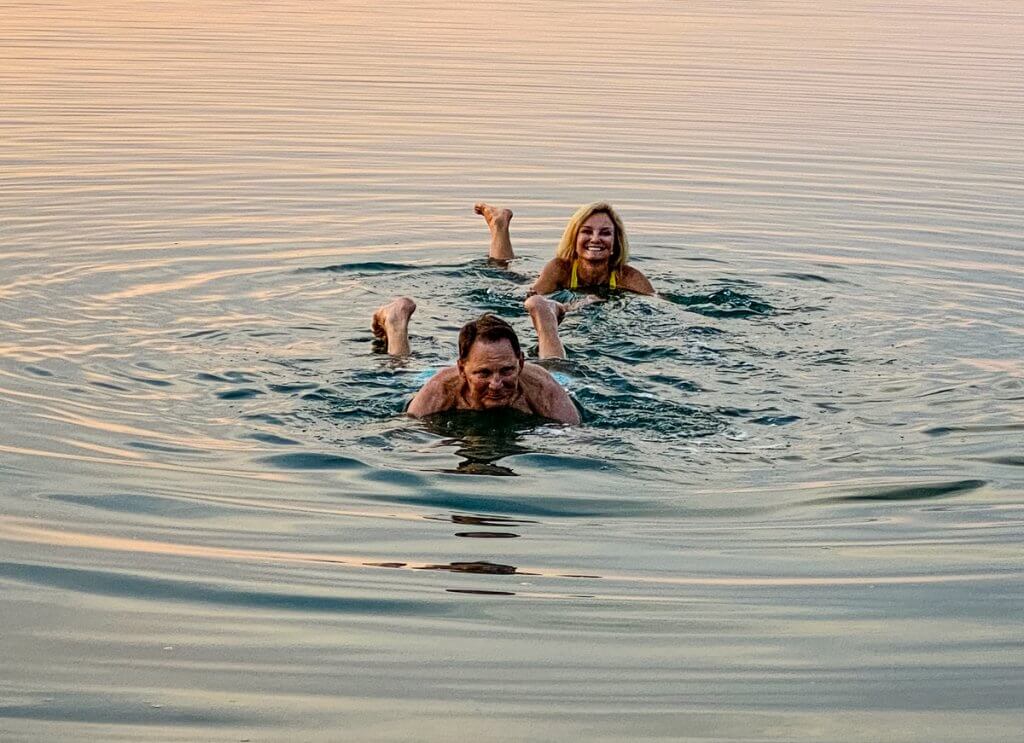
Had trouble getting out. The water was so salty that it was difficult to put any part of our bodies much below the surface. 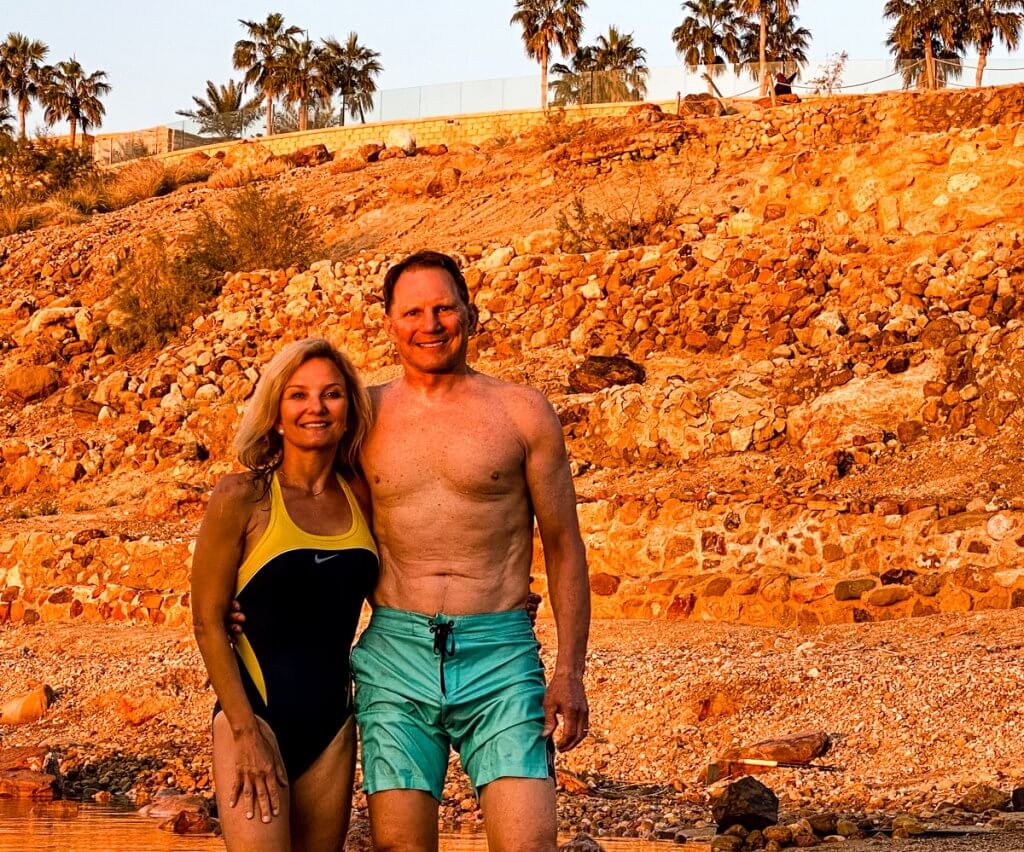
Incredible sunset glow, especially on the sand and limestone, which was orangish to begin with. 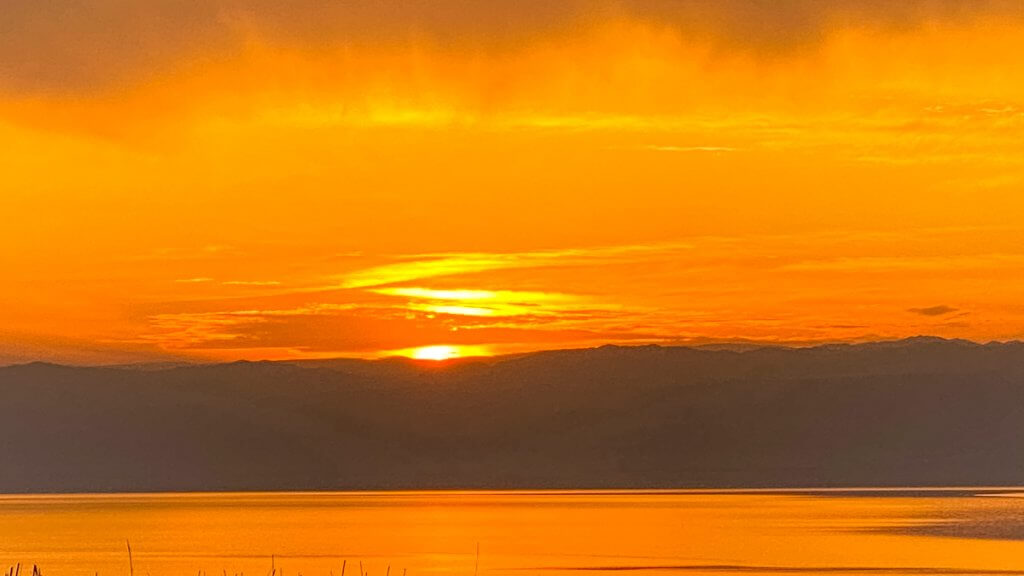
The last of the sun about to dip below the horizon, setting the sky on fire. 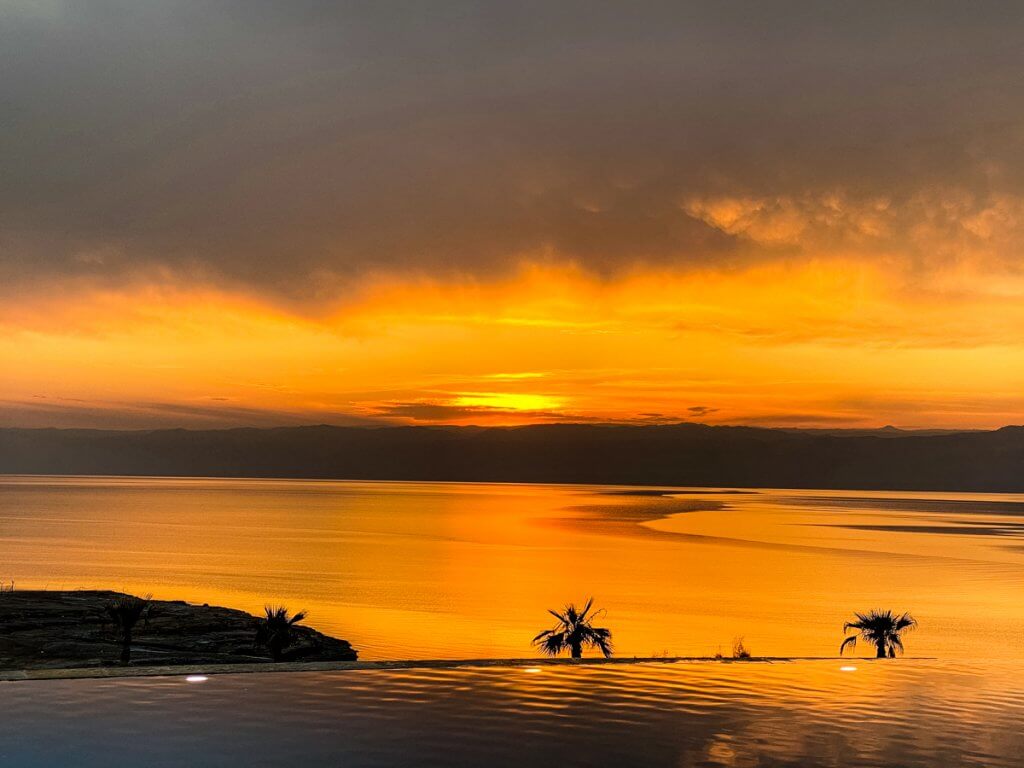
Post sunset from the infinity pool overlooking the Dead Sea. 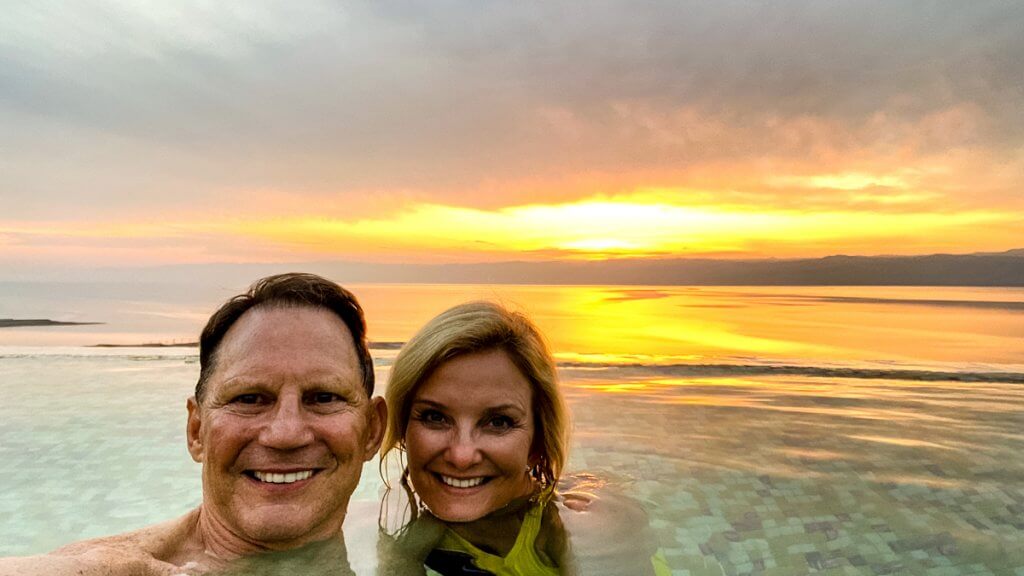
Big smiles because of the gorgeous setting…..and the heated pool!
Kerak Castle
Traveling south down the ancient King’s Highway (mentioned in the Old Testament) led us to the hilltop city of Kerak, home of Jordan’s largest crusader castle, the aptly-named Kerak Castle. The route of the King’s Highway in Jordan is over 5,000 years old and was used as a trading route in ancient times. It is one of the longest continuously used communication/trade routes in the world.
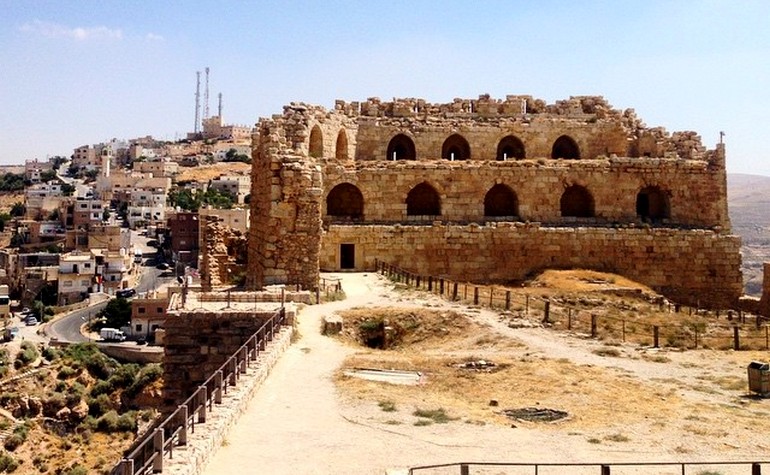
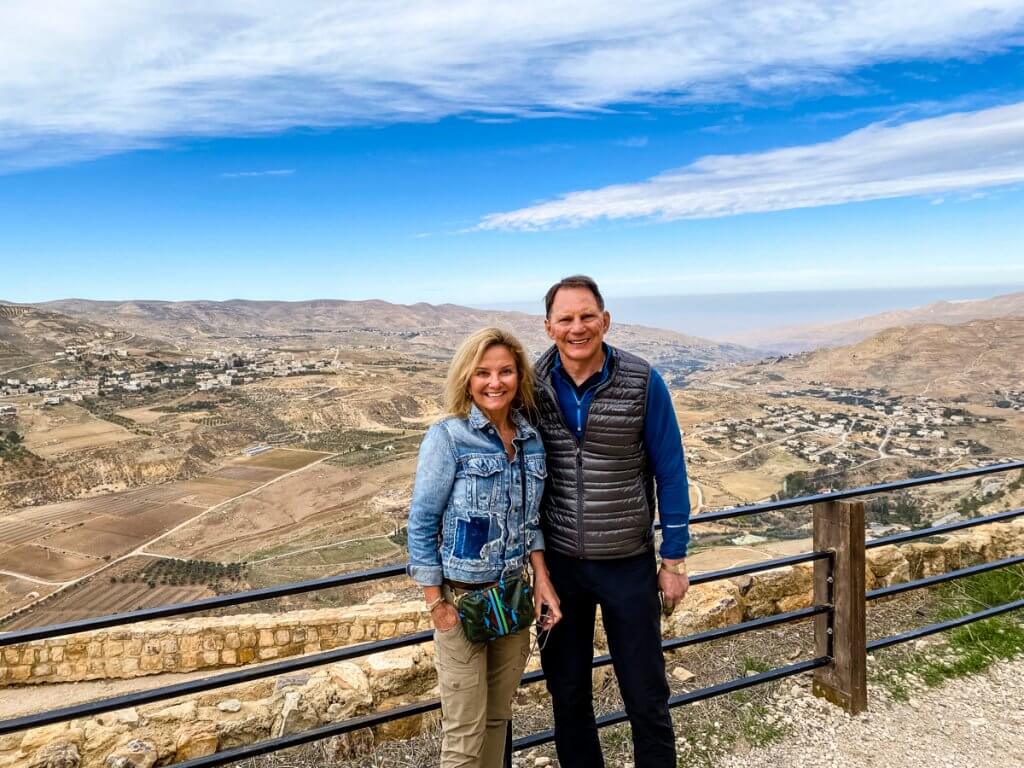
Dana Nature/Biosphere Reserve
Variety is the spice of life, so in addition to the cities, castles, ruins and temples we made a stop at Dana Nature Reserve. Here we enjoyed a too-brief hike and lunch while reveling in the expansive views of the Great Rift Valley in the distance.
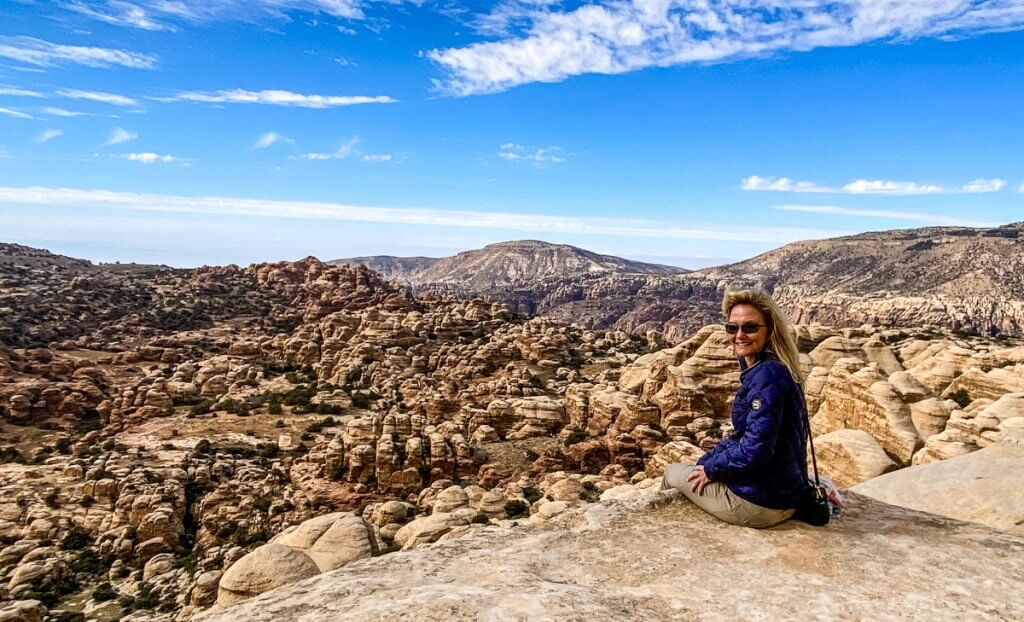
Anticipating our hike at the Dana Nature Reserve in south central Jordan. 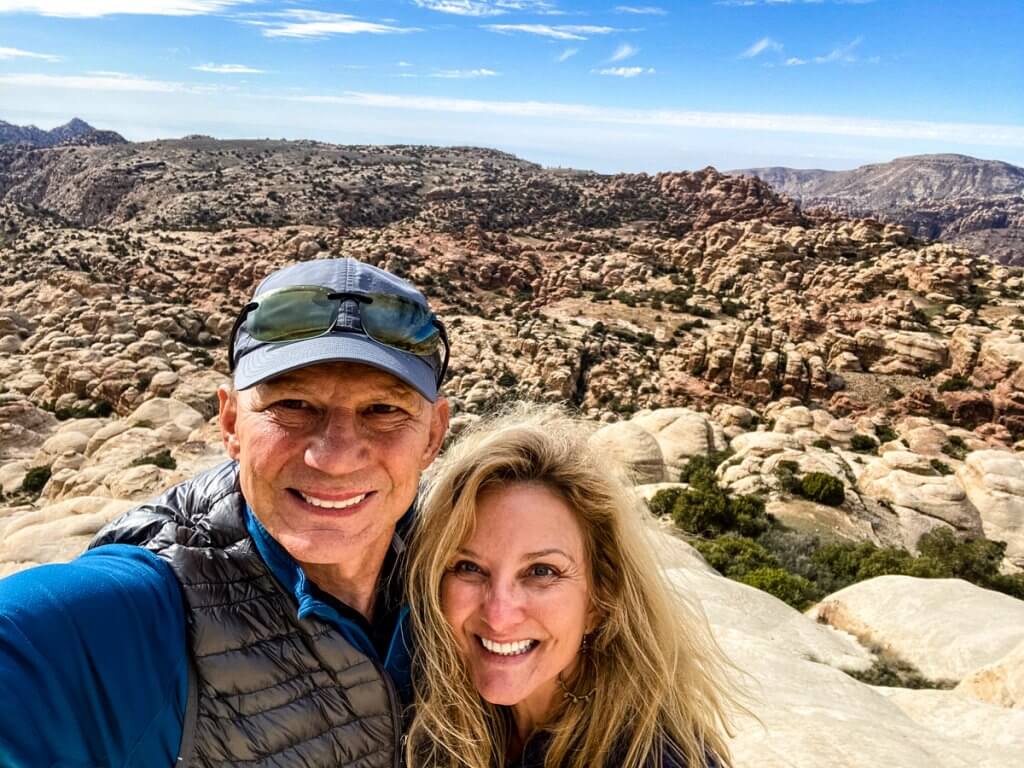
Someone is all smiles as we are about to take off hiking. 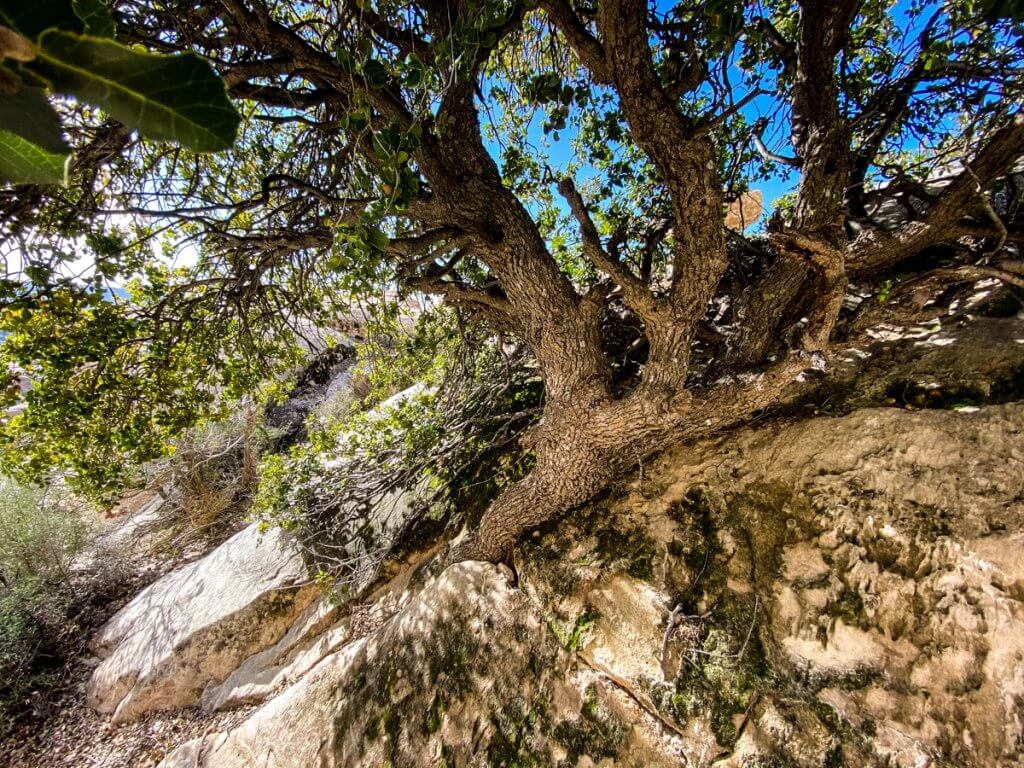
Talk about tenacious, this tree was growing out of a crevice in the rock. 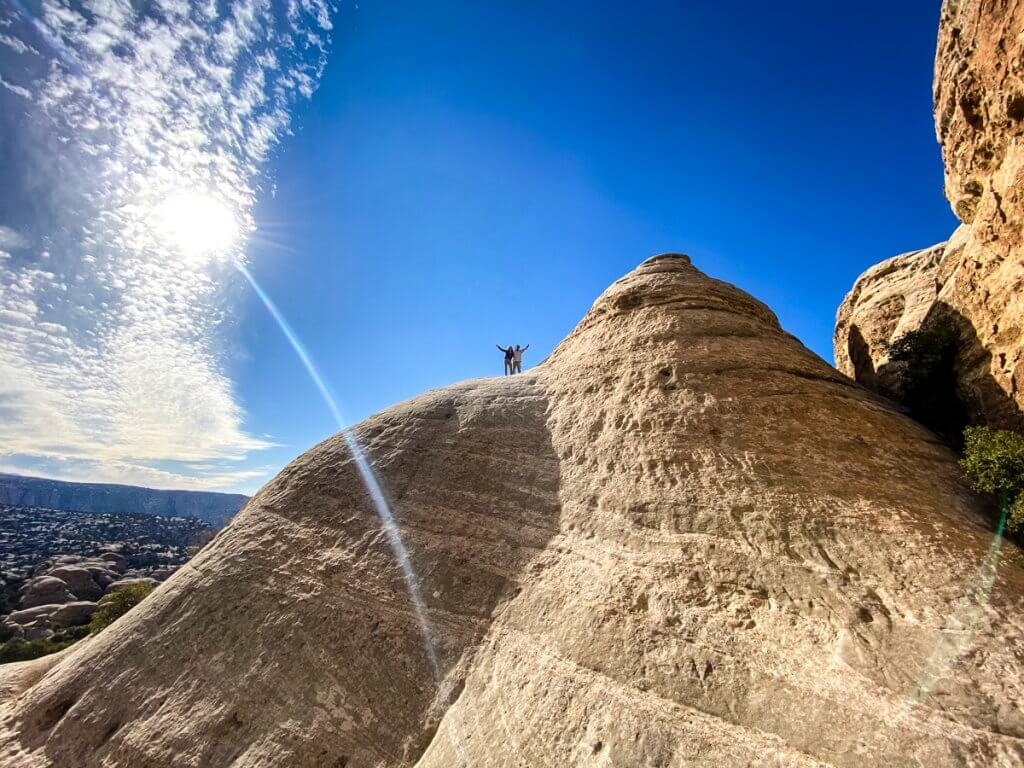
Shauna and our guide, Mohamad Ali, after scrambling up the 70 degree inclined surface of this rock.
=> VIDEO of Shauna and Mohamed climbing the sandstone hill.
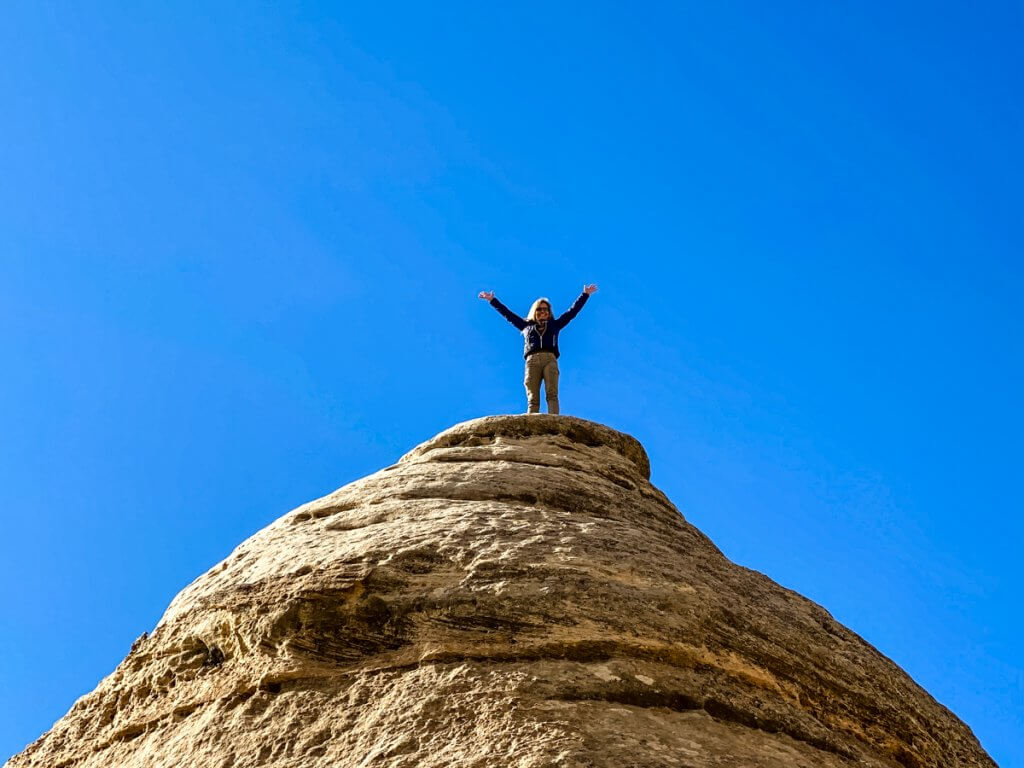
Top of the world!! 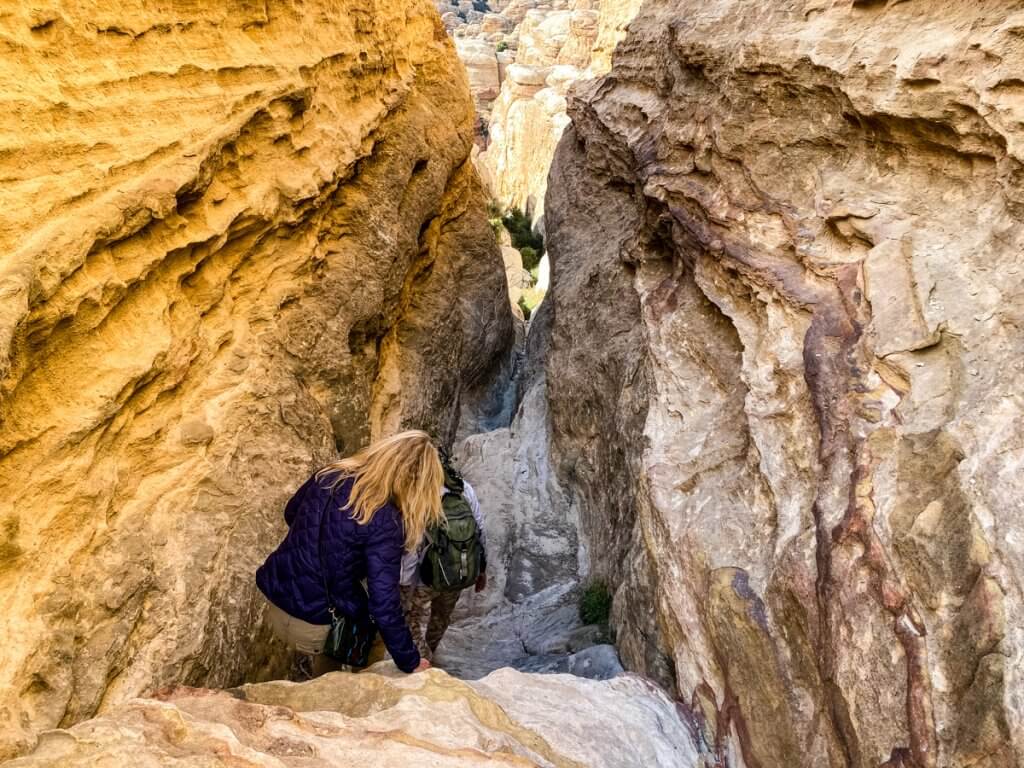
Starting back down through this narrow crevice in the rocks. 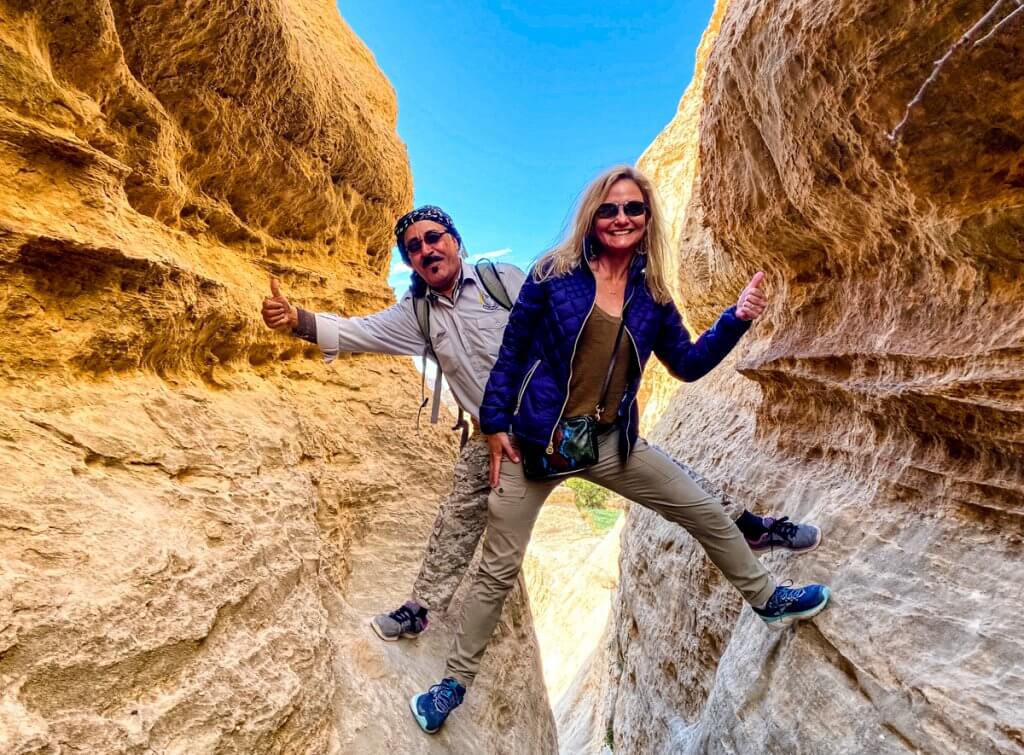
Fun and games with Mohamad, spanning the crevice. 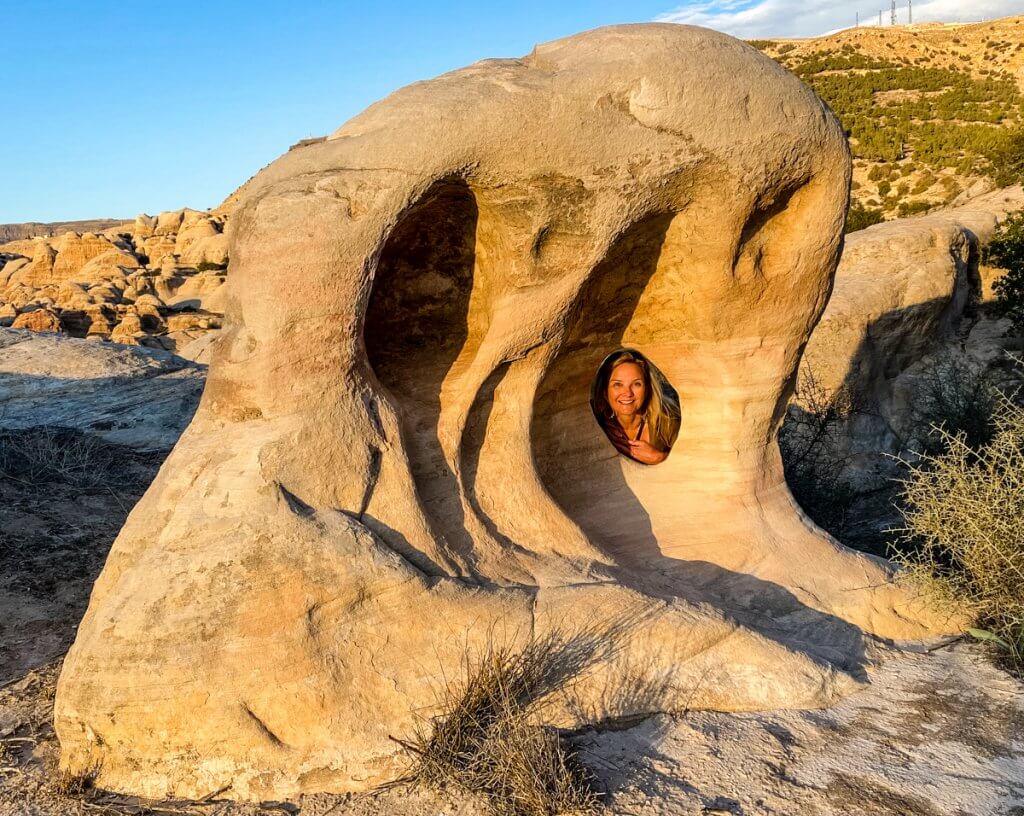
More fun and games: peek-a-boo from Elephant Rock! 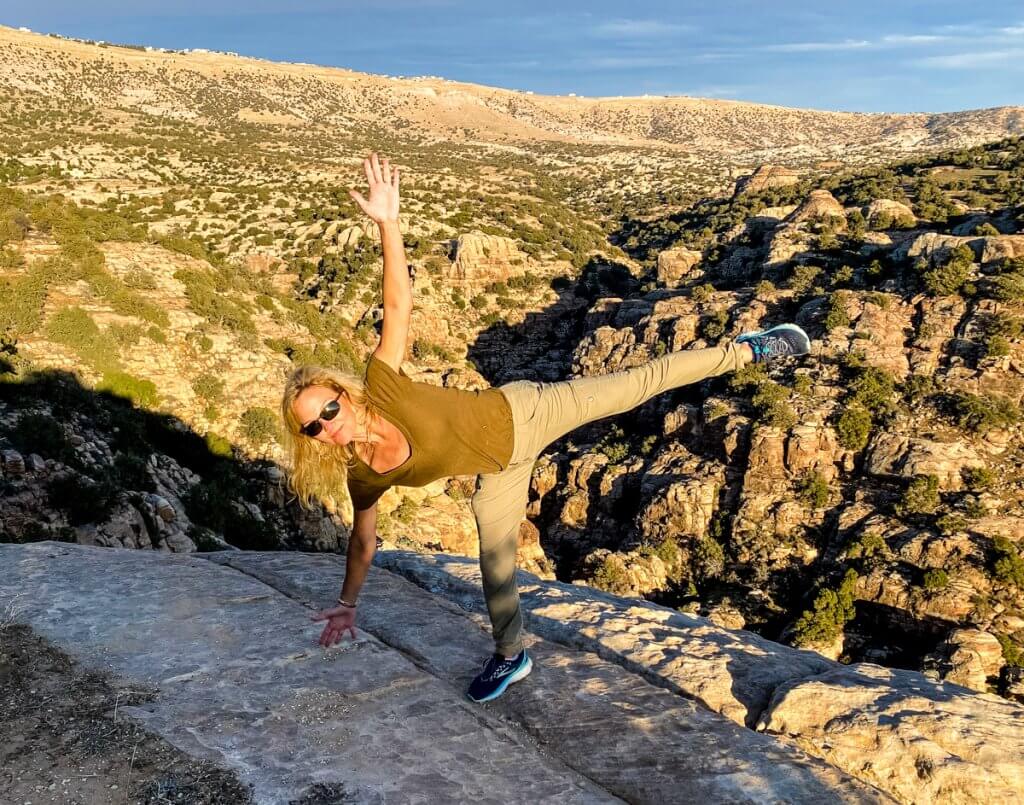
And the traditional yoga pose, back in the repertoire now that both shoulders are functioning again. 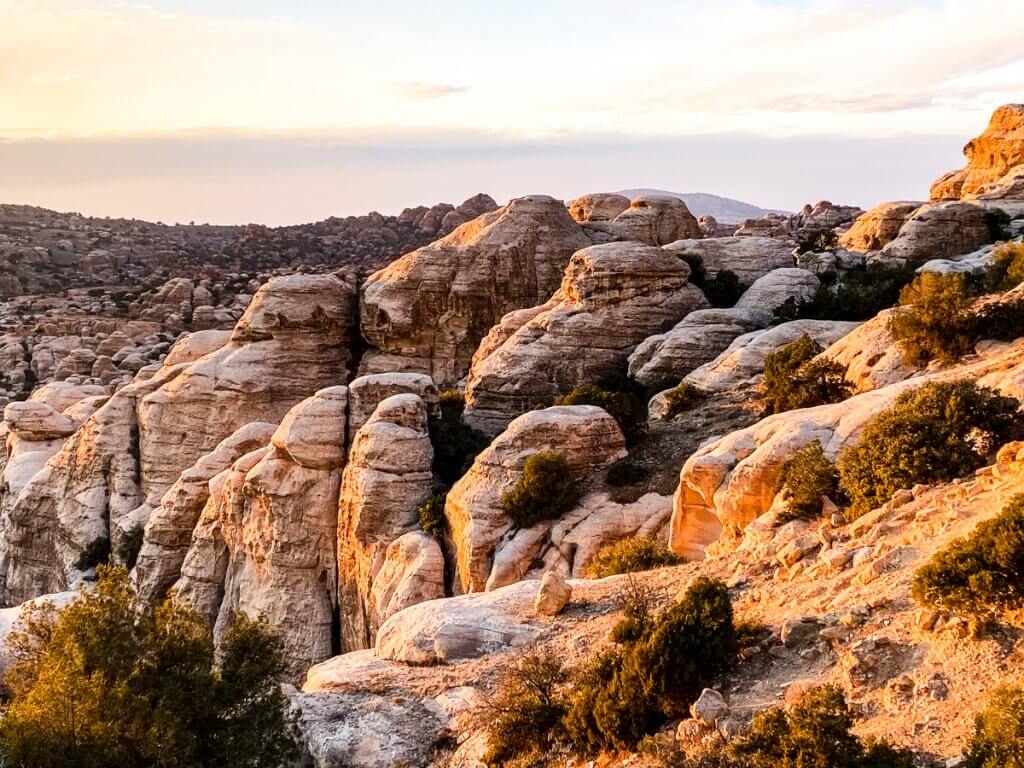
We say goodbye to this uniquely beautiful part of the world.

Special thanks to our incredibly nimble and always smiling guide, Mohamad Ali, who spent an extra couple of hours with us when we just couldn’t bring ourselves to quit this amazing landscape.

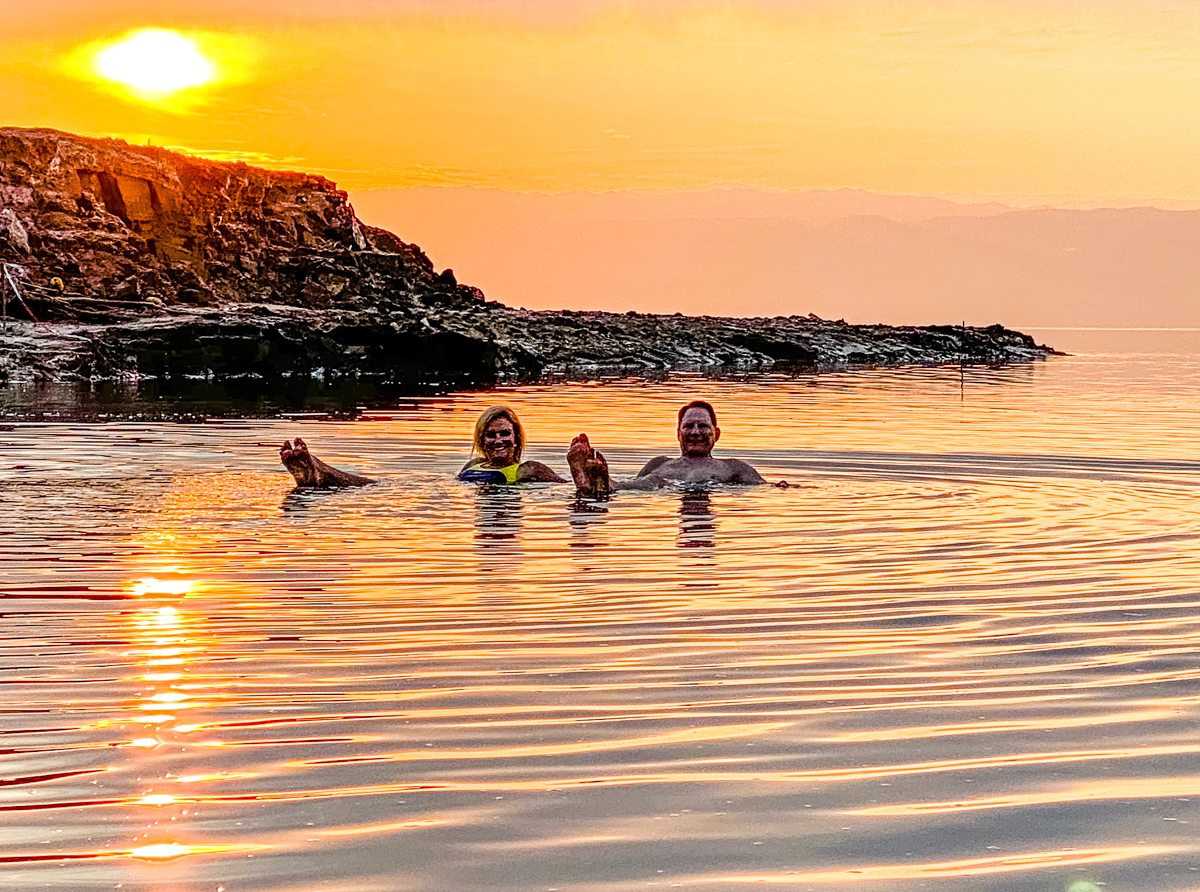
Was looking forward to this post! Did not disappoint!